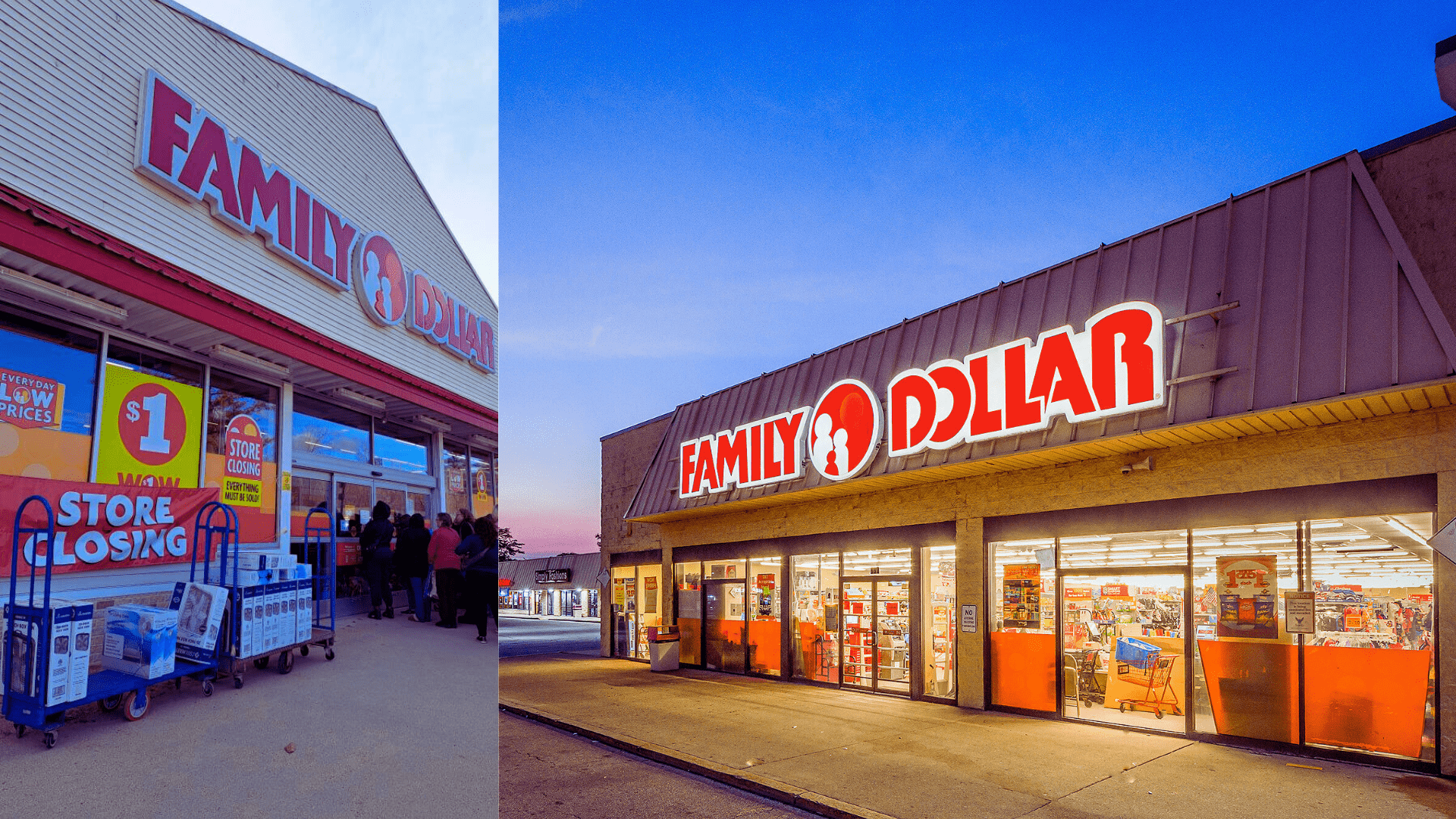Family Dollar stores are facing closures in 2024 for several reasons. A significant factor is underperformance, leading to the closure of around 600 stores in the U.S. as announced by Dollar Tree, which owns Family Dollar. This decision comes in light of Dollar Tree’s announcement of closing nearly 1,000 Family Dollar stores due to disappointing financial results in Q4 2024.
Issues contributing to the struggle include coping with high rates of retail theft, with reports indicating that while Dollar Tree stores seem to manage better, many Family Dollar stores are just not keeping up. Additionally, local opponents of the closures argue that this demonstrates the necessity for independent stores and a wider array of retail options, highlighting concerns over corporate monopolization of the retail space.
Reasons Behind Family Dollar Closures
Several factors are contributing to Family Dollar’s decision to close stores:
Impact of Inflation on Low-Income Shoppers
The closures of Family Dollar stores in 2024, including nearly 1,000 stores due to significant underperformance, have a compounded impact on low-income shoppers, particularly in the context of inflation. Family Dollar, traditionally, serves as a critical retail option for low-income communities, offering a range of products at lower price points. The closures, driven by underperformance and challenges such as high rates of retail theft, reduce the accessibility of affordable goods.
Inflation exacerbates this issue by decreasing the purchasing power of all consumers, especially those with limited income. As prices rise, the value of money falls, making everyday items more expensive and harder to afford. The closure of Family Dollar stores removes a low-cost shopping option from many communities, forcing low-income shoppers to turn to more expensive alternatives. This situation is further stressed by local opponents arguing that the closures highlight the need for more independent stores and diverse retail options, emphasizing the dangers of corporate dominance in the retail sector.
Increased Competition in the Discount Retail Market
Reflects broader challenges within the discount retail market, including increased competition. Several factors contribute to this competitive environment:
- Inflation and Economic Pressure: Inflation has significantly impacted low-income consumers, the core demographic for discount retailers like Family Dollar. With inflation, customers struggle more with financial constraints, leading to reduced spending power. This situation is exacerbated by cuts to government benefits such as SNAP (Supplemental Nutrition Assistance Program), which directly affects the purchasing capability of Family Dollar’s customer base.
- Retail Theft: Challenges such as increased rates of retail theft have also been cited as contributing factors to the closures. This issue not only impacts the stores’ financial health but also may deter investment in certain areas, thereby affecting expansion and operational strategies.
- Evolving Consumer Preferences: The retail market is witnessing shifts in consumer preferences, with a growing demand for e-commerce and convenience. This shift poses challenges for traditional brick-and-mortar discount retailers, requiring them to adapt to changing consumer behaviors and expectations.
- Competition from Other Retailers: The discount retail market has become increasingly competitive, with both established players and new entrants vying for market share. This competition not only comes from within the discount retail sector but also from supermarkets, online retailers, and other non-traditional discount retail outlets offering competitive pricing and product assortments.
The combination of these factors indicates that the closures of Family Dollar stores are symptomatic of broader market dynamics, where increased competition and changing economic conditions are reshaping the discount retail landscape.
Shoplifting and Inventory Loss
The closure of Family Dollar stores is a multifaceted issue, with shoplifting and inventory loss being significant contributors. Family Dollar, catering predominantly to low-income customers in cities, announced the closure of 1,000 stores, highlighting the struggles the discount chain faces. Among the challenges, increased shoplifting rates and the resulting inventory loss are notable factors impacting the retailer’s operational viability and financial health. These issues exacerbate the financial strain caused by other pressures such as inflation and competition, making it difficult for stores like Family Dollar to sustain their business model. The closures signal a deeper issue within the retail sector, where security challenges and loss prevention become increasingly critical in maintaining profitability and customer trust in an economically strained environment.
Dollar Tree’s Corporate Strategy
Dollar Tree’s corporate strategy in the face of challenging times appears to be multifaceted, focusing on store closures, inventory management, and potentially revising its product offerings and pricing model. The decision to close approximately 600 Family Dollar stores in 2024 reflects a strategic response to a complex mix of factors impacting its bottom line, including rampant shoplifting and inventory loss. These issues not only affect the company’s sales figures but also erode its profitability, necessitating a strategic reevaluation of its store footprint.
The strategy also involves addressing the rising levels of shoplifting and ensuring the safety of employees and customers. This might include investing in security measures or technology to reduce inventory loss. Additionally, Dollar Tree has been grappling with inflation and its impact on costs and pricing, which could lead to adjustments in its pricing strategy to maintain competitiveness and profitability.
Overall, Dollar Tree’s corporate strategy seems to be adapting to the economic and social challenges by streamlining its operations and possibly rethinking how it delivers value to its customers in a cost-effective manner.
Impact of Family Dollar Closures
The closure of Family Dollar stores can have a ripple effect on communities:
Job Losses and Community Impact
The closure of 600 Family Dollar stores in 2024 is anticipated to have significant repercussions, including job losses and adverse impacts on communities. These closures, prompted by financial losses and challenges such as shoplifting, could leave employees without work and communities without accessible shopping options. For regions already underserved by retailers, the absence of Family Dollar stores might exacerbate the difficulty of accessing affordable goods. This situation underscores the broader issue of how retail changes affect both the workforce and consumers, especially in economically vulnerable areas.
Food Deserts and Access to Affordable Goods
The closure of Family Dollar stores, will likely exacerbate the problem of food deserts and restrict access to affordable goods in underserved communities. These stores often serve as essential shopping venues for low-income Americans, offering not just household goods but also basic grocery items at lower prices. The closures could lead to layoffs, impacting employees and their families. Moreover, in areas where grocery stores are scarce, dollar stores like Family Dollar have filled the gap, allowing residents to purchase fresh produce and other essential items. A study cited by News Nation Now suggests that communities lose about 4-7% of their fresh produce purchases when grocery stores are replaced by dollar stores, indicating the significant role these stores play in providing access to healthier food options. The withdrawal of Family Dollar from these areas could deepen the challenges faced by residents in accessing affordable and nutritious food, further entrenching food insecurity issues.
Conclusion
The future of the Family Dollar remains uncertain. While hundreds of stores are closing, the company might continue to operate in many locations. The reasons behind these closures highlight the challenges faced by discount retailers in today’s economic climate.
Read also: When Does McDonald’s Serve Lunch?




